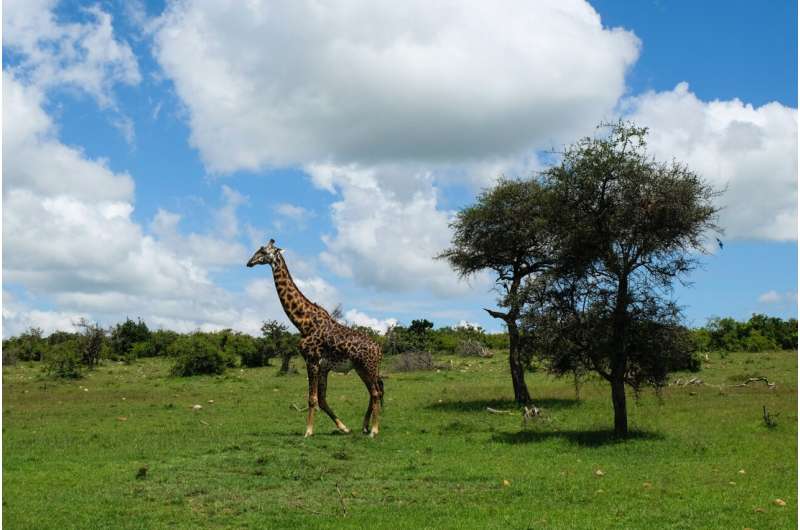This article has been reviewed according to Science X's editorial process and policies. Editors have highlighted the following attributes while ensuring the content's credibility:
fact-checked
peer-reviewed publication
trusted source
proofread
Nature favors all creatures great and small over medium size, finds research

Life may come in all shapes and sizes, but in nature the most extreme size ranges predominate, according to Rutgers researchers.
A survey of body sizes of Earth organisms, published Wednesday, March 29, in the journal PLOS ONE, shows that the planet's biomass—the material that makes up all living organisms—is concentrated in organisms at either end of the size spectrum.
"This conclusion—that life on Earth comes packaged predominantly in the largest and smallest sizes—was a discovery that surprised us," said Malin Pinsky, an associate professor in the Department of Ecology, Evolution and Natural Resources in the Rutgers School of Environmental and Biological Sciences (SEBS) and an author of the study. "Sometimes it seems like mosquitoes or flies or ants must run the world, and yet, when we did the numbers, we found that our world is dominated by the microbes and the trees. These are the silent partners that recycle the nutrients and replenish the air all around us."
To obtain the results, researchers spent five years compiling and analyzing data about the size and biomass of every type of living organism on the planet—from tiny one-celled organisms such as soil archaea and bacteria to large organisms such as blue whales and sequoia trees. They found that the pattern favoring large and small organisms held across all types of species and was more pronounced in land-based organisms than in marine environments.
"The largest body sizes appear across multiple species groups, and their maximum body sizes are all within a relatively narrow range," said Eden Tekwa, lead author of the study who conducted the research first as a postdoctoral fellow at Rutgers, then at the University of British Columbia. Katrina Catalano, another author of the study, conducted research as a doctoral student in the Department of Ecology, Evolution and Natural Resources at Rutgers.
"Trees, grasses, underground fungi, mangroves, corals, fish and marine mammals all have similar maximum body sizes," added Tekwa, now a research associate with McGill University's Department of Biology. "This might suggest that there is a universal upper size limit due to ecological, evolutionary or biophysical limitations."
The researchers said humans belong to the size range that comprises the highest biomass, which is a relatively large body size. The work opens the door to a better understanding of elemental life processes.
"Body size is a fundamental feature of life, governing everything from metabolic rates to birth rates and generation times," Pinsky said. "Cataloging which body sizes are most common is a key step towards understanding the world around us."
More information: Eden Tekwa et al, The sizes of life, PLOS ONE (2023). DOI: 10.1371/journal.pone.0283020. journals.plos.org/plosone/arti … journal.pone.0283020
Journal information: PLoS ONE
Provided by Rutgers University





















